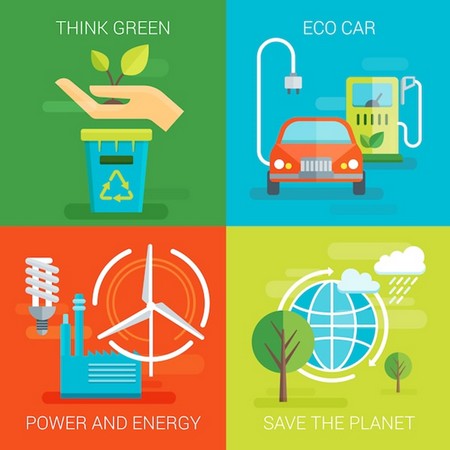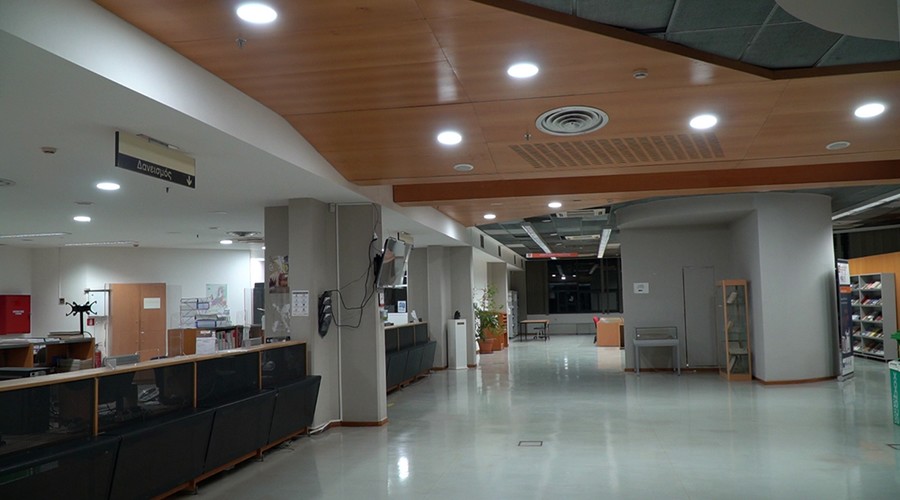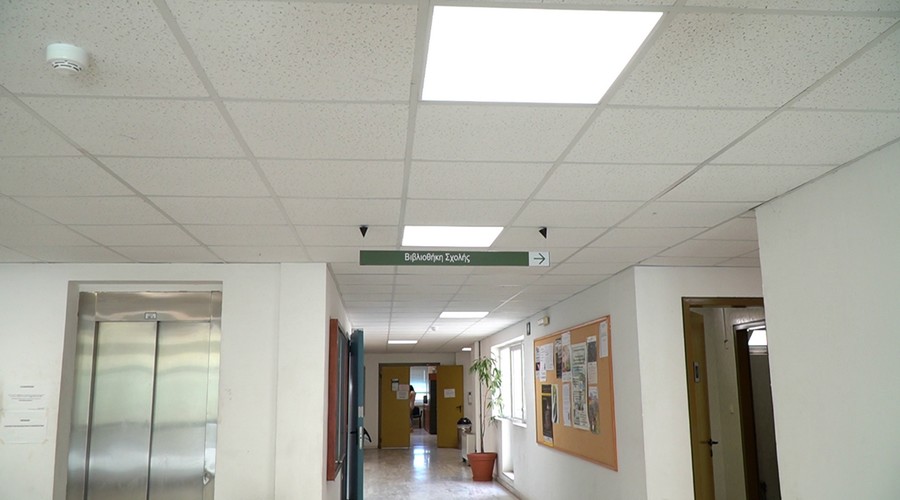Energy saving actions
Design of green and energy-efficient buildings
The National Technical University of Athens (NTUA) has adopted a comprehensive strategy to reduce energy consumption in its facilities. Basic practice is the energy upgrade of the older buildings of the campus, to improve their performance. For example, the Aerodynamics, Shipbuilding and Hydrodynamic Engines (ANYM) building is being upgraded in terms of energy through interventions such as thermal insulation of the building shell, the replacement of opening frames with new high-performance ones and the installation of LED lighting fixtures instead of the old fluorescent lamps. These interventions are expected to raise the building’s energy rating from category H to category A, drastically reducing the demand for heating, cooling and lighting.

In addition to the interventions for the improvement and upgrading of the building potential, such as the regular energy inspection of the facilities and the utilization of available financing programs for energy efficiency projects. It is characteristic that the upgrade project of the ANYM building was included in an operational program “Transport Infrastructure, Environment and Sustainable Development” co-financed by European funds, showing the institution’s commitment to implement low-carbon measures.
In order to achieve high energy efficiency, NTUA applies modern energy-saving technologies throughout the campus. An important measure is the extensive upgrade of lighting systems. Energy-intensive old technology luminaires (e.g. sodium and fluorescent lamps) have been replaced with LED luminaires, both in the interiors of the buildings and in the surrounding area. A total of 1,374 new lighting fixtures have been installed at the Technical University of Zografou LED lighting fixtures for lighting streets, sidewalks, squares, buildings and parking lots. At the same time, a central electronic lighting network management system was installed and operated, which allows the remote control of each luminaire (on/off), the dimming, the grouping of luminaires and the monitoring of the actual consumption in real time. Due to these interventions, the energy savings in the outdoor lighting of the campus are estimated at around 76.8% – the total power consumption has been reduced from 231 kW to just 87 kW. The benefits are manifold, in addition to the reduction of energy costs: the quality of lighting and road safety in the NTUA premises has been improved, maintenance needs have been reduced due to the long service life of the LEDs, while light pollution was also reduced.


Fig. 14. Illustration of part of the upgrade of lighting systems at NTUA
In addition to lighting, NTUA also introduces innovative heating, cooling and ventilation systems aimed at improving the energy efficiency of buildings. A pilot hybrid heating-cooling system is being implemented in the ANYM building, which combines a heat pump, a cold (ice) storage system and an adsorptive cooler, in collaboration with solar thermal collectors. At the same time, an air conditioning system is installed in the same building that utilizes shallow geothermal energy through a closed loop, offering heating and cooling with a very high degree of efficiency and exploiting the constant temperature of the subsoil. These systems reduce conventional energy consumption by utilizing stored cooling and the thermal energy of the sun and soil. In addition, mechanical ventilation units with heat recovery are installed, as well as modern variable flow air conditioning units refrigerant VRF in buildings. Mechanical ventilation with heat recovery ensures fresh air in buildings by limiting heat losses, while VRF units flexibly adjust air conditioning demand per space, saving energy compared to older systems. Overall, the integration of such technologies makes NTUA buildings “smart” in terms of energy management, with automated control and continuous monitoring of consumption, to achieve maximum savings without reducing the quality of the internal environment.



